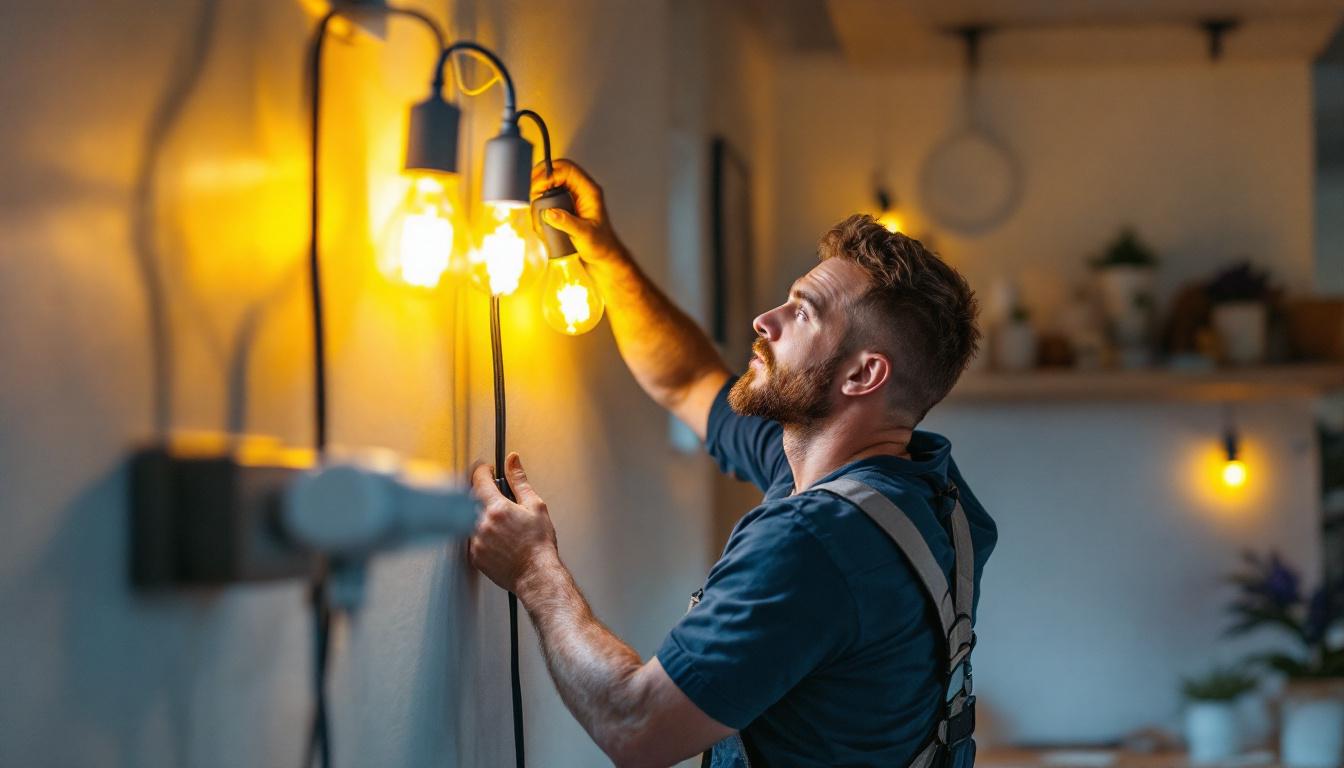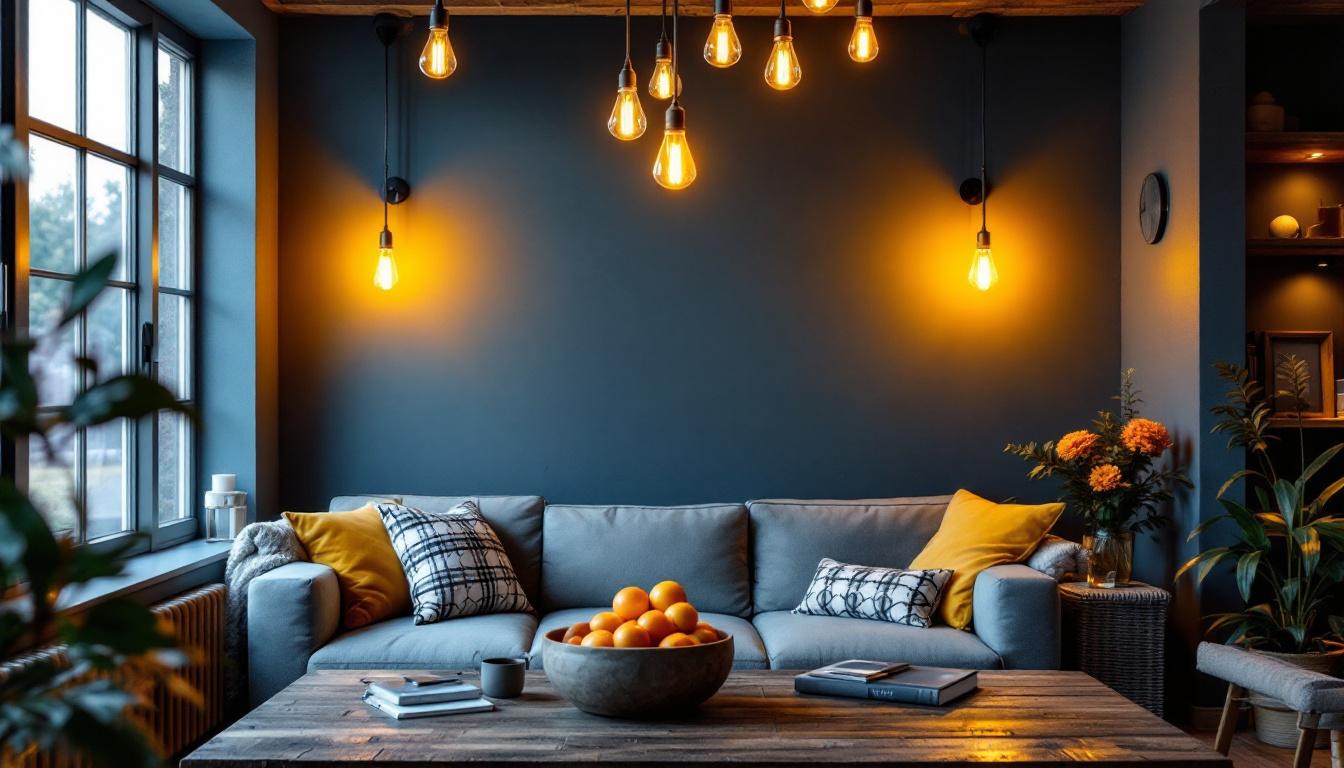
Lighting plays a pivotal role in the functionality and aesthetics of any space. For lighting contractors, understanding the science behind light fixtures and their lighting capabilities is essential. This article delves into the key concepts and principles that govern light fixtures, providing valuable insights for those in the industry.
Before delving into the specifics of light fixtures, it is crucial to grasp the fundamentals of light itself. Light is a form of electromagnetic radiation that is visible to the human eye. It travels in waves, and its properties can be described in terms of wavelength, frequency, and energy.
The wavelength of light determines its color. The visible spectrum ranges from approximately 380 nanometers (violet) to 750 nanometers (red). Understanding this spectrum is vital for lighting contractors, as it influences the choice of light fixtures based on the desired ambiance and functionality of a space.
For instance, warmer colors (lower wavelengths) create a cozy atmosphere, making them ideal for residential settings. In contrast, cooler colors (higher wavelengths) promote alertness and are often preferred in commercial environments. The psychological effects of color temperature can also play a significant role; warmer hues can evoke feelings of comfort and relaxation, while cooler tones can enhance focus and productivity. This understanding allows designers to tailor lighting solutions that align with the intended use of each space, whether it be a tranquil living room or a bustling office.
Light intensity is another critical factor. It refers to the amount of light emitted from a source and is measured in lumens. The brightness perceived by the human eye, however, is influenced by several factors, including the surrounding environment and the color of surfaces within the space.
Lighting contractors must consider these elements when selecting fixtures. A well-lit space is not solely about high lumen output; it’s about achieving the right balance of intensity that complements the design and function of the area. For example, a space with dark walls may require more lumens to achieve the same perceived brightness as a room with lighter surfaces. Additionally, the distribution of light—whether it is direct, indirect, or diffused—can significantly impact the overall feel of a room. Properly placed fixtures can create depth and dimension, enhancing architectural features while ensuring that the space remains functional and inviting.
Light fixtures come in various types, each designed for specific applications and effects. Understanding these types is essential for contractors to make informed decisions that meet their clients’ needs.
Ambient lighting provides overall illumination to a space. Fixtures such as ceiling-mounted lights, chandeliers, and wall sconces fall into this category. These fixtures are crucial for creating a base level of light that allows individuals to navigate and use a space comfortably.
When selecting ambient lighting fixtures, contractors should consider the height of the ceiling, the size of the room, and the desired mood. For example, a large chandelier may be suitable for a grand foyer, while recessed lighting could be more appropriate for a modern kitchen. Additionally, the color temperature of the bulbs used in ambient fixtures can significantly impact the atmosphere; warmer tones can create a cozy environment, while cooler tones can lend a more energetic feel to a space.
Task lighting is designed to illuminate specific areas where activities such as reading, cooking, or working take place. Examples include desk lamps, under-cabinet lighting, and pendant lights over kitchen islands. These fixtures should provide focused illumination without causing glare or shadows.
Contractors must assess the tasks being performed in a space to determine the appropriate type and placement of task lighting. For instance, adjustable task lights can be beneficial in workspaces, allowing users to direct light where it is needed most. Furthermore, incorporating dimmable options can enhance functionality, enabling users to adjust the brightness based on the time of day or specific tasks, thus improving both comfort and efficiency.
Accent lighting is used to highlight particular features or objects within a space, such as artwork, architectural details, or plants. Spotlights, track lighting, and wall-mounted fixtures are common choices for accent lighting.
When incorporating accent lighting, contractors should consider the angle and intensity of the light to create the desired effect. Properly placed accent lights can add depth and interest to a room, enhancing its overall aesthetic appeal. Moreover, the use of color filters or adjustable LED lights can further enhance the visual impact, allowing homeowners to change the ambiance according to their preferences or the occasion. This versatility not only elevates the design but also adds a layer of personalization to the space, making it truly unique.
The distribution of light from a fixture is a crucial aspect that affects how a space is illuminated. Different fixtures provide varying patterns of light distribution, which can significantly impact the functionality and mood of a room.
Direct lighting illuminates a specific area, while indirect lighting reflects off surfaces to provide a softer, more diffused light. Understanding the difference is essential for contractors when designing lighting schemes.
Direct lighting is often used for task and accent lighting, while indirect lighting is preferred for ambient lighting. A balanced combination of both can create a well-lit environment that is both functional and inviting.
The beam angle of a fixture determines how concentrated or spread out the light is. A narrow beam angle produces a focused light, ideal for accent lighting, while a wider beam angle provides broader illumination, suitable for ambient lighting.
Contractors should consider the intended use of the space when selecting fixtures with specific beam angles. For example, a narrow beam may be effective for highlighting artwork, while a wider beam may be necessary for general illumination in large areas.
Color temperature, measured in Kelvin (K), describes the warmth or coolness of light. It plays a significant role in setting the mood of a space. Understanding color temperature is essential for lighting contractors to create the desired atmosphere.
Warm light (around 2700K to 3000K) creates a cozy and inviting ambiance, making it ideal for residential spaces such as living rooms and bedrooms. Cool light (above 4000K) is more energizing and is often used in commercial settings, such as offices and retail spaces.
Contractors should consider the purpose of the space when selecting color temperatures. A well-thought-out lighting plan that incorporates varying color temperatures can enhance the functionality and comfort of an environment.
The Color Rendering Index (CRI) measures a light source’s ability to accurately render colors compared to natural light. A higher CRI value indicates better color accuracy. For contractors, selecting fixtures with a high CRI is crucial, especially in settings where color differentiation is important, such as art galleries or retail stores.
When advising clients, contractors should emphasize the significance of CRI in achieving the desired visual effects and ensuring that colors appear true to life under artificial lighting.
With increasing awareness of environmental issues, energy efficiency has become a critical consideration in lighting design. Contractors must stay informed about energy-efficient technologies and practices to meet client demands and regulatory standards.
Light Emitting Diodes (LEDs) have revolutionized the lighting industry due to their energy efficiency and longevity. LEDs consume significantly less energy than traditional incandescent or fluorescent bulbs, making them an attractive option for both residential and commercial applications.
Contractors should educate clients on the benefits of LED lighting, including lower energy bills and reduced maintenance costs. Additionally, the wide range of color temperatures and styles available in LED fixtures allows for versatile design options.
Smart lighting systems offer advanced features such as remote control, dimming capabilities, and automated scheduling. These systems not only enhance convenience but also promote energy savings by allowing users to optimize their lighting usage.
Contractors should consider incorporating smart lighting solutions into their designs, as they appeal to tech-savvy clients and can provide added value to projects. Educating clients on how to use these systems effectively can enhance their overall satisfaction with the lighting design.
When designing lighting plans, contractors must consider various factors to ensure the final result meets both aesthetic and functional requirements. A comprehensive approach to lighting design can significantly enhance the quality of a space.
The architectural features of a space play a significant role in determining the lighting design. Elements such as ceiling height, wall color, and room layout can influence how light is distributed and perceived.
Contractors should assess these features and tailor their lighting solutions accordingly. For example, high ceilings may benefit from pendant fixtures that draw the eye upward, while darker wall colors may require brighter fixtures to achieve the desired illumination.
Understanding the specific needs and preferences of clients is essential for successful lighting design. Each client may have unique requirements based on their lifestyle, the functionality of the space, and personal aesthetic preferences.
Contractors should engage in thorough consultations with clients to gather insights and feedback. This collaborative approach ensures that the final lighting design aligns with the client’s vision while also addressing practical considerations.
Understanding the science behind light fixtures and lighting design is essential for lighting contractors. By grasping the fundamentals of light, the various types of fixtures, and the principles of energy efficiency, contractors can create effective and aesthetically pleasing lighting solutions.
As the industry continues to evolve with new technologies and design trends, staying informed and adaptable will be key to success. By prioritizing client needs and embracing innovative solutions, lighting contractors can enhance their projects and contribute to the creation of well-lit, functional spaces.
Ready to elevate your lighting projects with the science and art of lighting design? Look no further than LumenWholesale for all your lighting needs. We provide contractors with high-quality, specification-grade lighting products at unbeatable wholesale prices. Our extensive selection not only meets but exceeds industry standards, ensuring that every project shines with reliability and high performance. Plus, with free shipping on bulk orders, you can enjoy premium lighting solutions at the best value — without any hidden fees. Don’t compromise on quality or cost. Discover the best in wholesale lighting at LumenWholesale and bring unparalleled quality, affordability, and convenience to your next project.

Discover how the 4 LED light fixture is revolutionizing the lighting industry for contractors.

Discover how lighting contractors can enhance their business operations and client satisfaction by embracing plug lighting solutions.

Explore the science of interior barn lights and discover how lighting contractors can enhance their projects with innovative techniques.

Discover innovative hacks for smart lighting contractors to enhance outdoor spaces with solar-powered sconces.